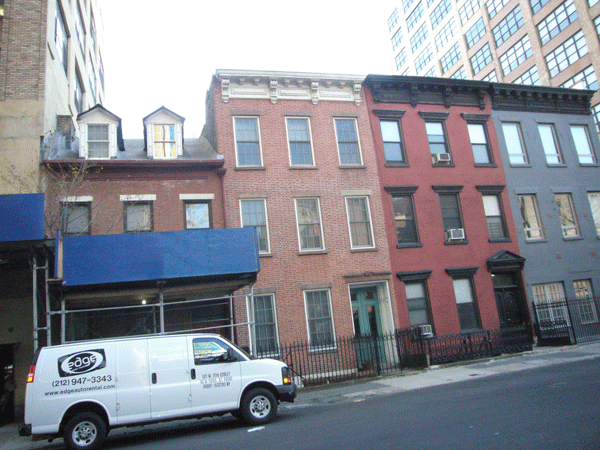 [/media-credit]
[/media-credit]
The new landmarks include 310 Spring St., which is between Renwick and Greenwich Sts., and the houses at 32, 34 and 36 Dominick St. between Hudson and Varick Sts.
“These four rare Federal-era buildings are significant reminders of the beginning of New York City’s evolution into a major urban center,” said L.P.C. Chairperson Robert Tierney after the commission’s March 27 vote.
“The houses are remarkably intact despite their age and the profound changes that have taken place around them,” Tierney added. He noted that since 2002, the commission has designated 17 Federal-style houses, most of them between the Battery and 23rd St.
In other action last week, the commission calendared a public hearing on the proposed landmark designation of the 1901 Bowery Bank building at 124 Bowery at Grand St. in Chinatown. No date was set for the hearing.
In the Hudson Square designation, the three brick Dominick St. houses are the remnants of a row of 12 that were completed around 1826 on the south side of Dominick St. in an area where several sites were cleared between 1919 and 1927 to make way for the Holland Tunnel.
The three houses were among five built by Smith Bloomfield, a mason, responsible for several other houses in the once-marshy area formerly known as Lispenard Meadows.
The two-and-a-half-story house at 32 Dominick St. retains the most of it original profile, with Flemish bond brickwork, a high peaked roof with a cornice and dormers. In 1912 it became the rectory of Our Lady of Vilnius Church, which is located on Broome St. The parish of Our Lady of Vilnius was closed in 2007 and the New York Catholic Archdiocese still owns the landmarked rectory and the church building behind it, which is not protected by landmark status.
The archdiocese did not contest the landmark designation of 32 Dominick St., but the owners of 34 and 36 Dominick Sts. opposed the designation.
The building at 34 Dominick St., originally two and a half stories tall with a peaked roof and dormers, was altered around 1866 when it was raised to a full three stories. The building at 36 Dominick St., with double doors and a gated areaway, was also raised around 1866 to three stories.
However, the height of Dominick St.’s roadbed itself was raised for the tunnel’s construction, making it appear that the buildings lost a story.
The building at 310 Spring St. was completed in 1819 for Dennison Wood, a ship captain, and his wife, Lydia. Wood’s ship carried cotton, harvested by slaves in the South, to mills in New York and New England, as well as to England and France. The building was altered in 1847 when a storefront and a third story were added.
A dry-goods business and later a manufacturer occupied the ground floor of 310 Spring St. Currently owned by Unity Environmental Corp., the building has residential units on the upper floors and a club, The Anchor, on the ground floor.

















